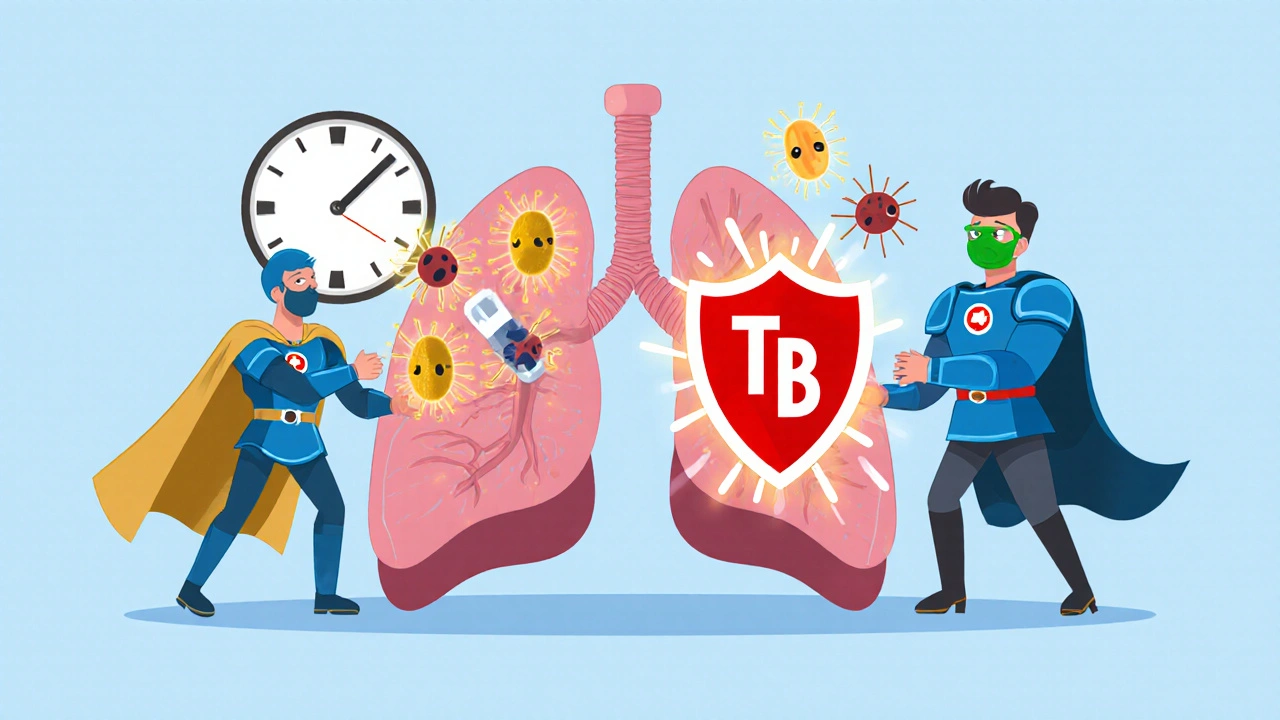When you hear rifampin, a broad-spectrum antibiotic from the rifamycin family used to treat serious bacterial infections like tuberculosis. Also known as Rifadin, it's one of the few drugs that can kill dormant bacteria hiding in the body—making it essential for curing TB and preventing relapse. Unlike many antibiotics that just slow down bacteria, rifampin shuts down their ability to make RNA, stopping them from multiplying at the source. That’s why it’s not just a backup option—it’s often the backbone of treatment.
Rifampin doesn’t work alone. It’s almost always paired with other drugs like isoniazid or pyrazinamide because using it by itself leads to resistance fast. The World Health Organization recommends it in first-line TB regimens worldwide. But here’s the catch: rifampin doesn’t just fight infection—it changes how your body handles other medicines. It speeds up liver enzymes that break down everything from birth control pills to blood thinners, antidepressants, and even some HIV drugs. If you’re on any regular medication, rifampin can make them useless—or dangerous.
It’s also used for other infections, like staph infections in artificial joints or heart valves, especially when the bacteria are resistant to other antibiotics. Doctors sometimes prescribe it for people exposed to meningitis to stop them from spreading the germ, even if they feel fine. But it’s not harmless. Side effects like orange urine, nausea, or liver stress are common. That’s why blood tests are often needed during treatment. And if you stop too soon—even if you feel better—you risk creating a superbug that won’t respond to anything.
What you’ll find in the posts below isn’t just a list of articles. It’s a practical guide to how rifampin fits into the bigger picture of antibiotics, drug interactions, and infection control. You’ll see how it compares to other TB drugs, why timing matters with other meds, and what happens when resistance creeps in. No fluff. Just real info you can use.

Isoniazid has long been the standard for TB treatment, but safer, shorter alternatives like rifampin and rifapentine are now preferred. Learn which options work best for active and latent TB-and when to avoid isoniazid.
read more